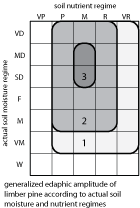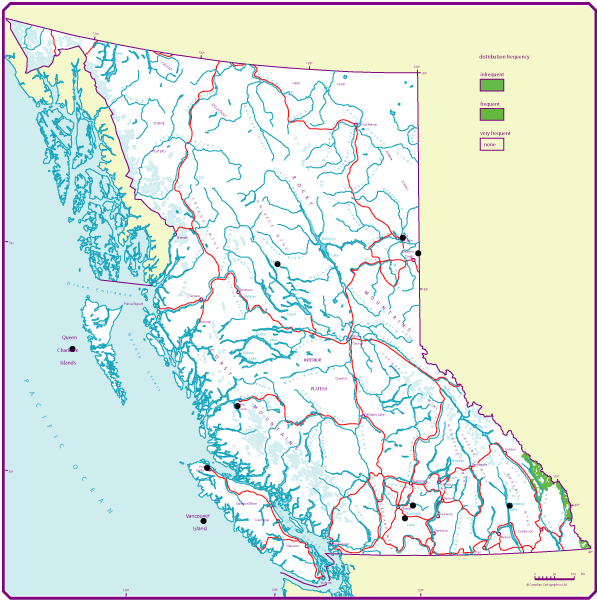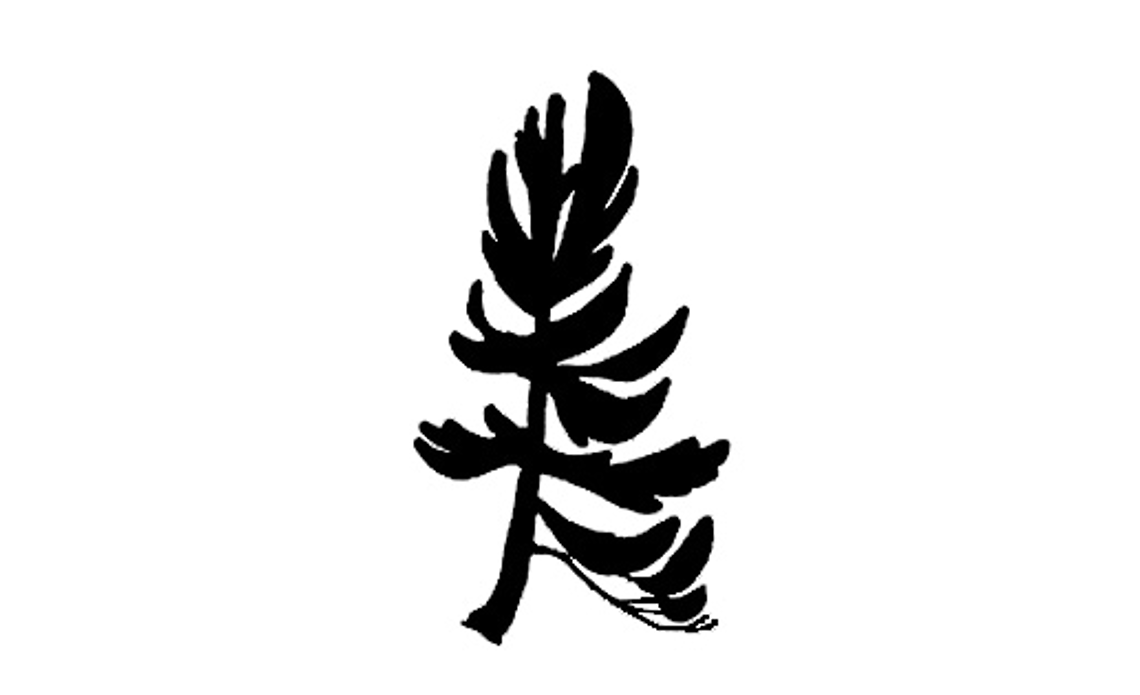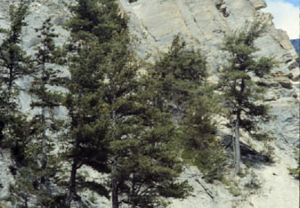Limber pine
On this page
- Geographic range and ecological amplitudes
- Tolerances and damaging agents
- Silvical characteristics
- Genetics and notes
Geographic range and ecological amplitudes
Description
Limber pine is a small- to medium-sized (<15m tall), slow-growing, long-lived conifer of high mountains. When mature, it may develop multi-stemmed growth form, with typically stubby branches, an upswept branched crown, and rough, dark brown bark with wide scaly plates. It is not a timber crop species, but it is valued for watershed protection and aesthetics.
Geographic range
Geographic element:
Western North American/Cordilleran and marginally Pacific
Distribution in Western North America:
(south) in the Pacific region; central and south in the Cordilleran region
Ecological amplitudes
Climatic amplitude:
subalpine boreal - (cool temperate)
Orographic amplitude:
(montane) - subalpine
Occurrence in biogeoclimatic zones:
upper southeastern ESSF, (upper southeastern MS)
Edaphic amplitude

Range of soil moisture regimes:
very dry - moderately dry - slightly dry - fresh - moist - (very moist)
Range of soil nutrient regimes:
poor - medium - rich - (very rich); calciphytic
Limber pine grows mostly on calcareous substrates; therefore, Krajina (1969) concluded that limber pine requires for productive growth higher amounts of calcium and magnesium than whitebark pine, jack pine, and lodgepole pine.
Tolerances and damaging agents
Root system characteristics
Similar to whitebark pine, limber pine develops a deep and spreading root system. It is well anchored, even on rocky substrates and is seldom uprooted despite its large, exposed crown. Roots of limber pine are associated with both ecto- and endo-mycorrhizae.
| Tolerance to | Tolerance class | Comments |
|---|---|---|
| low light | L | most commonly grows in open canopy forests |
| frost | H | often forms in the upper timberline |
| heat | M | tolerates insolated sites |
| water deficit | H | frequent on water-deficient sites |
| water surplus | L | absent on waterlogged sites |
| nutrient (mainly N) deficiency | M | absent in very poor, acid soils |
| Damaging agent | Resistance class | Comments |
|---|---|---|
| snow | H | resistant but not resilient to high snowpack |
| wind | H | deeply rooted and well anchored |
| Risk class | ||
|---|---|---|
| fire | H | especially in young stands |
| insect | L | not a serious concern in subalpine forests; mountain pine beetle |
| fungi | L | not a serious concern in subalpine forests; root and butt rots (e.g., red ring rot, Armillaria root disease, Schweinitzii butt rot), white pine blister rust |
| other agents | L | not a serious concern in subalpine forests; dwarf mistletoes (Arceuthobium spp.) |
Associated tree species and successional role
In British Columbia, limber pine grows in both pure and mixed-species stands. With increasing elevation, the species grows in isolated clumps on exposed ridges. It is a pioneer species (primary succession) and may be present in early, mid-, and late stages of secondary succession; a variable component in the upper ESSF forest. Except on most severe sites, where trees remain widely spaced, limber pine show little evidence of maintaining its population in the presence of other conifers.
| Associated tree species |
Occurance class | Major area of occurance |
|---|---|---|
| whitebark pine | L | upper, southeastern ESSF |
| engelmann spruce | L | upper, southeastern ESSF |
| subalpine fir | L | upper, southeastern ESSF |
Genetics and notes
Genetics
Genetic variation exists within limber pine in a general north-south pattern, but range of variability for any one trait is small.
Notes
Steele, R. 1990. Pinus flexilis. Pp. 348-354 in R.M. Burns and B.H. Honkala (technical coordinators) Silvics of North America, Vol. 1. Agri. Handbook 654, USDA For. Serv., Washington, D.C.
Limber pines greatest values are for wildlife habitat, watershed protection, and aesthetics. More detailed silvics information is given by:



